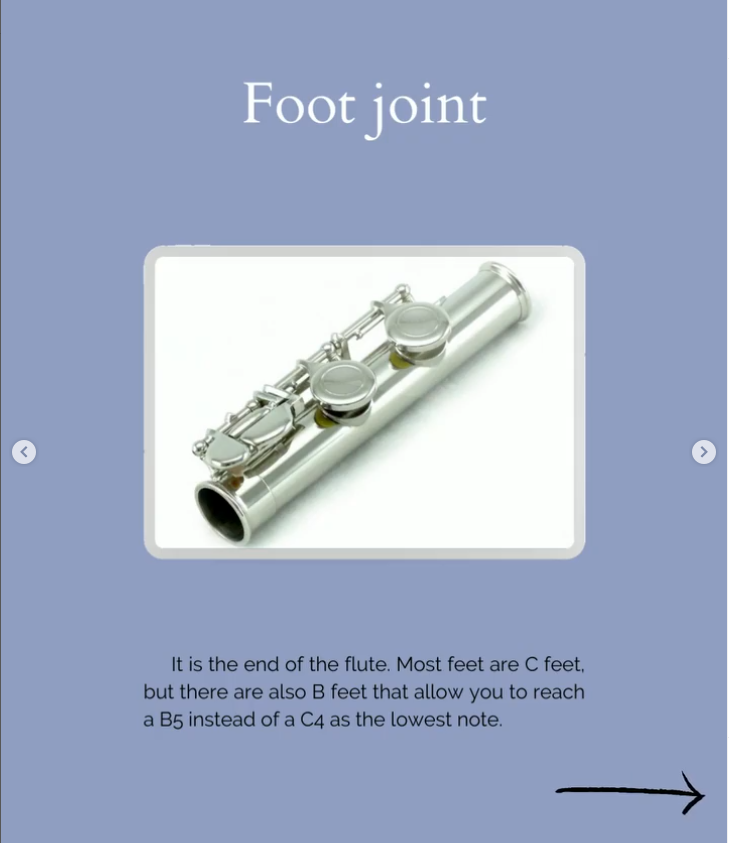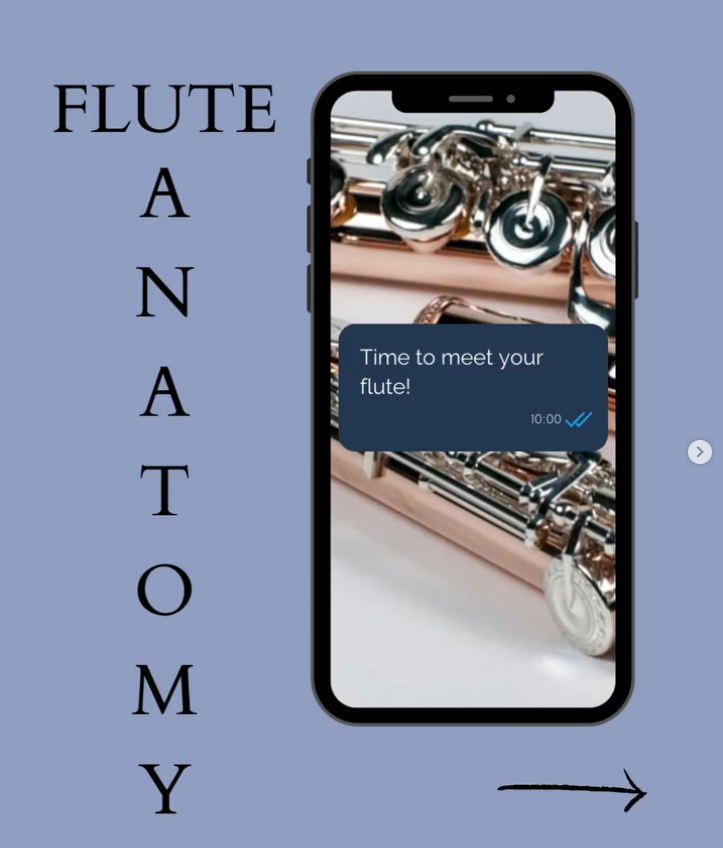
Knowing our instrument is a fundamental part of our flute learning path. In fact, when I work with my beginning level students (both children and adults), I always dedicate a fraction of the lesson to talk about the parts of the flute and how they work. In this post, I'll tell you a little bit about the anatomy of this beautiful instrument:
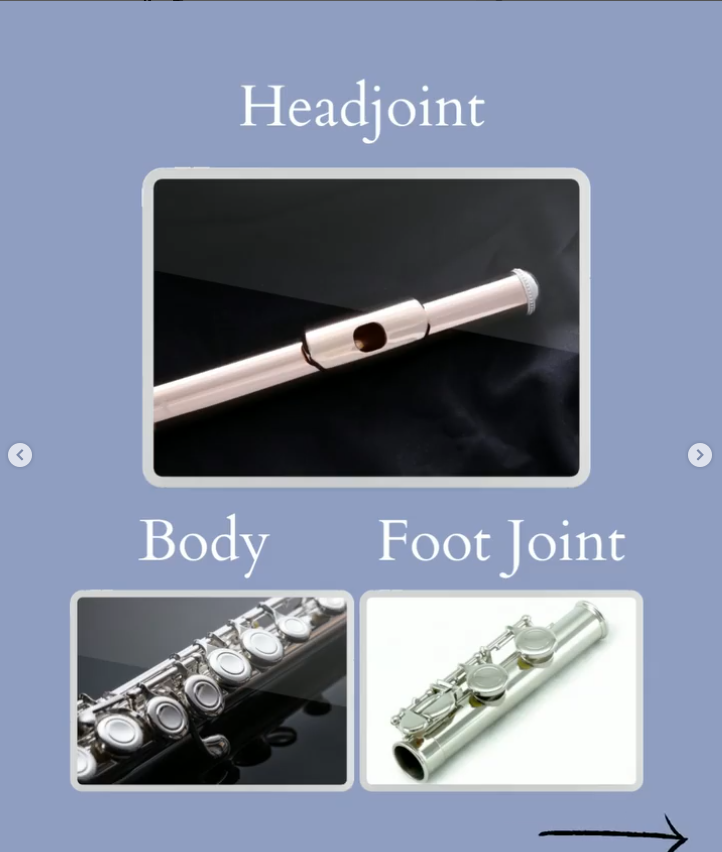
Headjoint:
- Lip plate: it's the place where you put your lower lip or chin.
- Embochure hole: the place where you have to blow to make the flute notes.
- Crown: Fixes the cork on the correct posture.
- Cork: The headjoint has a hidden piece of cork to tune the instrument and improve its sound. Some instruments have other materials like gold, silver or many types of woods.
- Blowing edge: This piece of the embochure hole splits the air and creates the vibrations that produce the flute tone.
- Raiser: Gives the embouchure hole its depth.
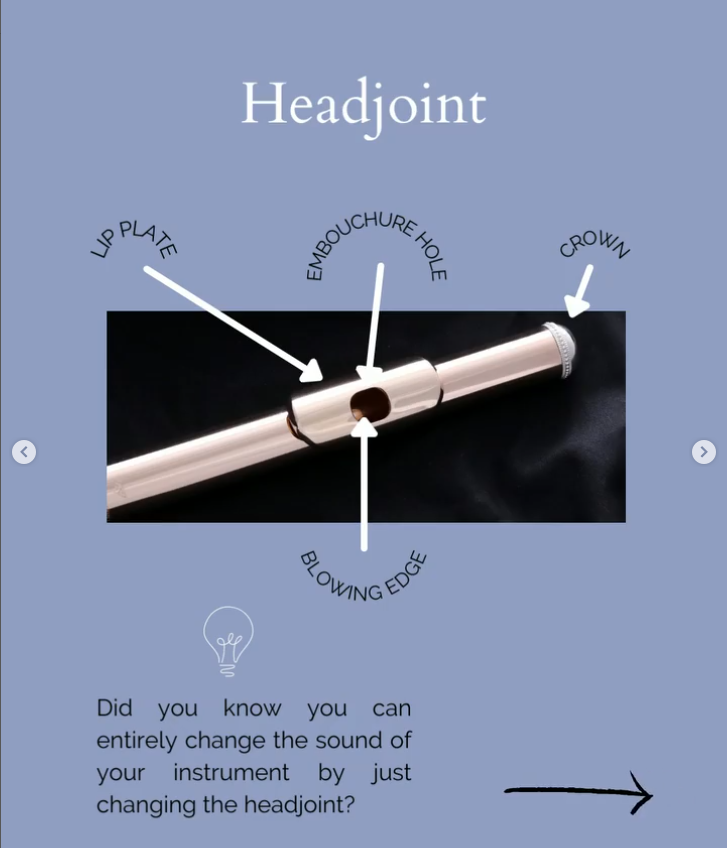
Body:
-Barrel: solid area where the name of the brand used to be. This is the best place to grip your flute.
- Keys: They're located above the holes and their function is to close or open holes. Some flutes have open-key system, which means it has no material in the middle.
- Pads: you can find it in every key and they are responsible for sealing the key and preventing the air from escaping. The quality of the keys is critical to the sound of the flute. They're an essential part and should be replaced and serviced regularly.
- Springs: this part ensures that the keys return to its original position.
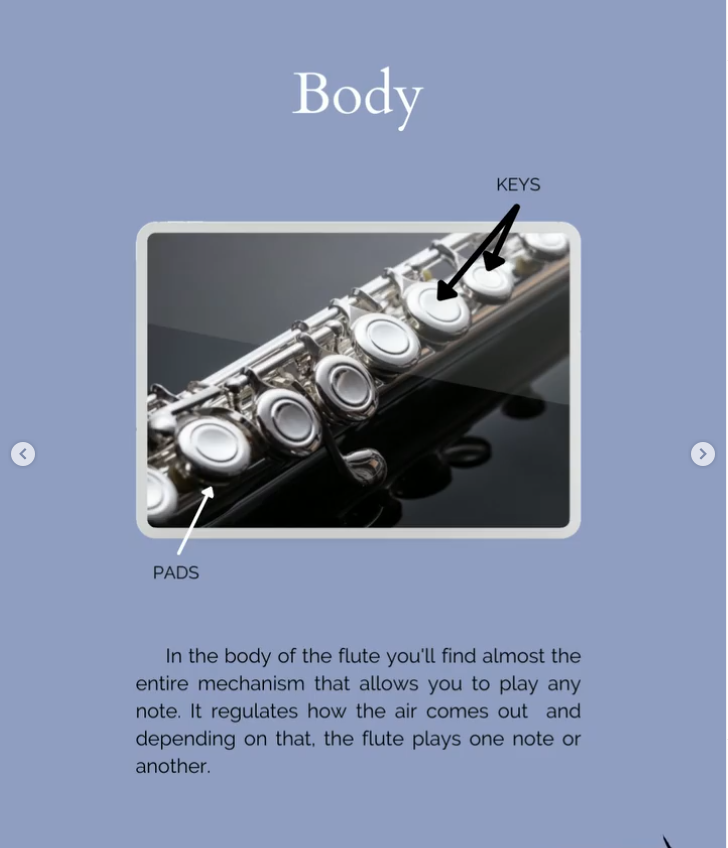
Foot joint:
The foot has a similar mechanism to the body. If the upper section has only 2 keys, it's is called a C foot, if it has 3, it's called a B foot because it's 1 tone lower. The foot not only can change the range of the instrument, but also affects the balance and overall projection of the sound.
